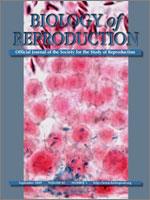Glycosyl phosphatidylinositol (GPI)-linked proteins, which are involved in post-testicular maturation of sperm and have a role in fertilization, are acquired on the sperm surface from both vesicular and membrane-free soluble fractions of epididymal luminal fluid (LF) and uterine LF. Herein, we investigate the mechanism of uptake of these proteins from the soluble fraction of LFs using sperm adhesion molecule 1 (SPAM1) as a model. Ultracentrifugation and native Western blot analysis of the soluble fraction revealed that SPAM1 is present in low-molecular-weight (monomeric) and high-molecular-weight (oligomeric) complexes. The latter are incapable of transferring SPAM1 and may serve to produce monomers. Monomers are stabilized by hydrophobic interactions with clusterin (CLU), a lipid carrier that is abundantly expressed in LFs. We show that CLU is involved in the transfer of SPAM1 monomers, whose delivery was decreased by anti-CLU antibody under normal and apolipoprotein-enhanced conditions. Coimmunoprecipitation revealed an intimate association of CLU with SPAM1. Both plasma and recombinant CLU had a dose-related effect on transfer efficiency: high concentrations reduced and low concentrations enhanced delivery of SPAM1 to human and mouse sperm membranes, reflecting physiological states in the epididymal tract. We propose a lipid exchange model (akin to the lipid-poor model for cholesterol efflux) for the delivery of GPI-linked proteins to sperm membranes via CLU. Our investigation defines specific conditions for membrane-free GPI-linked protein transfer in vitro and could lead to technology for improving fertility or treating sperm pathology by the addition of relevant GPI-linked proteins critical for successful fertilization in humans and domestic animals.
How to translate text using browser tools
8 April 2009
Clusterin Facilitates Exchange of Glycosyl Phosphatidylinositol-Linked SPAM1 Between Reproductive Luminal Fluids and Mouse and Human Sperm Membranes
Genevieve S. Griffiths,
Deni S. Galileo,
Rolands G. Aravindan,
Patricia A. Martin-DeLeon
ACCESS THE FULL ARTICLE

Biology of Reproduction
Vol. 81 • No. 3
September 2009
Vol. 81 • No. 3
September 2009
female reproductive tract
gamete biology
GPI anchor
GPI-linked proteins
lipid carriers
male reproductive tract
membrane modification




